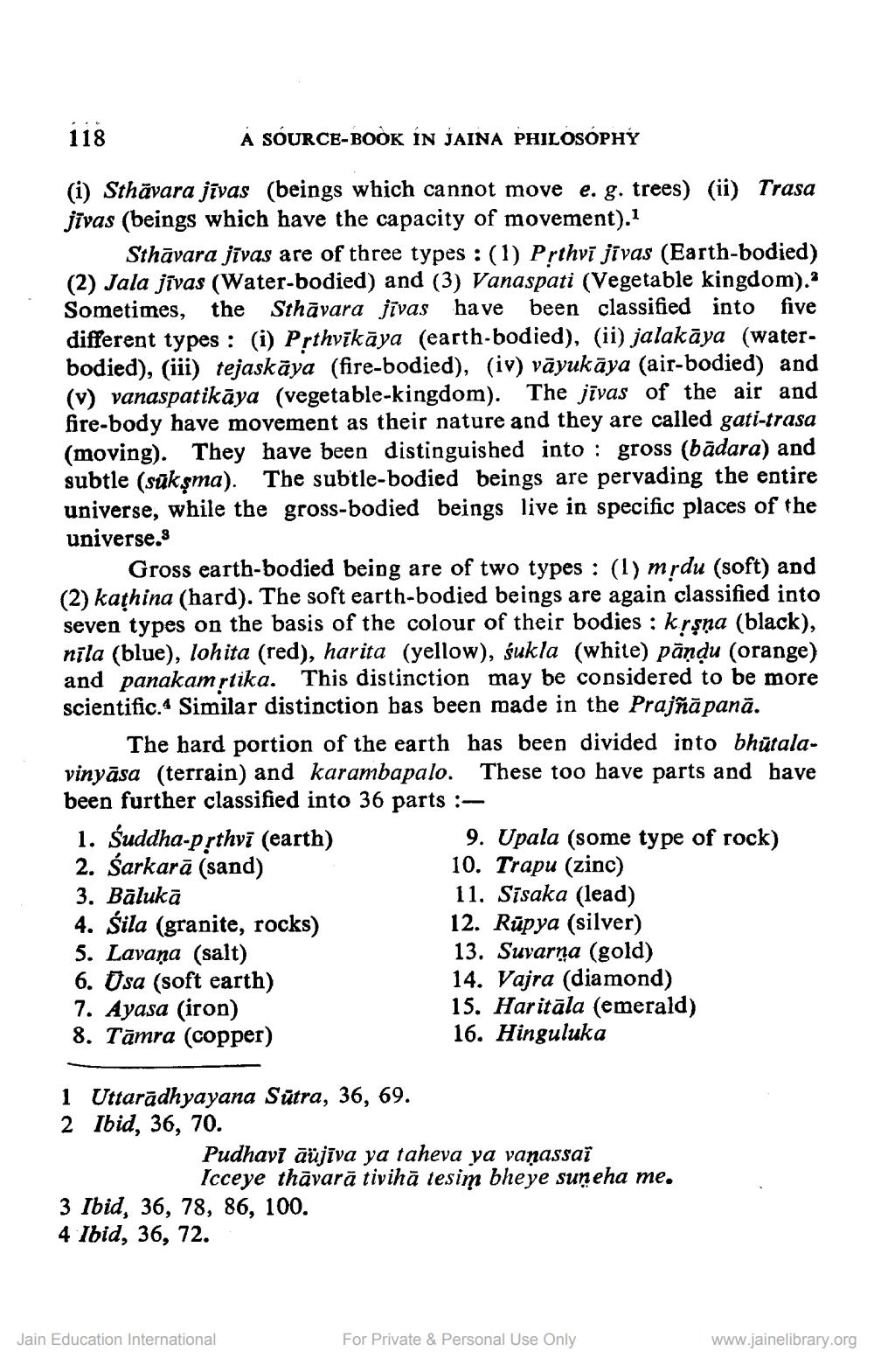________________
118
À SOURCE-BOOK IN JAINA PHILOSOPHY
(i) Sthāvara jīvas (beings which cannot move e. g. trees) (ii) Trasa jīvas (beings which have the capacity of movement).1
Sthāvara jīvas are of three types : (1) Prthvī jīvas (Earth-bodied) (2) Jala jīvas (Water-bodied) and (3) Vanaspati (Vegetable kingdom).' Sometimes, the Sthāvara jīvas have been classified into five different types : (i) Prthvīkāya (earth-bodied), (ii) jalakāya (waterbodied), (iii) tejaskāya (fire-bodied), (iv) vāyukāya (air-bodied) and (v) vanaspatikāya (vegetable-kingdom). The jīvas of the air and fire-body have movement as their nature and they are called gati-trasa (moving). They have been distinguished into : gross (bādara) and subtle (sükşma). The subtle-bodied beings are pervading the entire universe, while the gross-bodied beings live in specific places of the universe.3
Gross earth-bodied being are of two types : (1) mrdu (soft) and (2) kathina (hard). The soft earth-bodied beings are again classified into seven types on the basis of the colour of their bodies : krsna (black), nila (blue), lohita (red), harita (yellow), śukla (white) pāņdu (orange) and panakamrtika. This distinction may be considered to be more scientific. Similar distinction bas been made in the Prajñā panā.
The hard portion of the earth has been divided into bhūtalavinyāsa (terrain) and karambapalo. These too have parts and have been further classified into 36 parts :1. Suddha-prthvi (earth)
9. Upala (some type of rock) 2. Sarkarā (sand)
10. Trapu (zinc) 3. Bālukā
11. Sisaka (lead) 4. Šila (granite, rocks)
12. Rūpya (silver) 5. Lavaņa (salt)
13. Suvarna (gold) 6. Osa (soft earth)
14. Vajra (diamond) 7. Ayasa (iron)
15. Haritāla (emerald) 8. Tāmra (copper)
16. Hinguluka
1 Uttarādhyayana Sutra, 36, 69. 2 Ibid, 36, 70.
Pudhavi āüjīva ya taheva ya vanassas
Icceye thāvarā tivihā tesim bheye suneha me. 3 Ibid, 36, 78, 86, 100. 4 Ibid, 36, 72.
Jain Education International
For Private & Personal Use Only
www.jainelibrary.org




